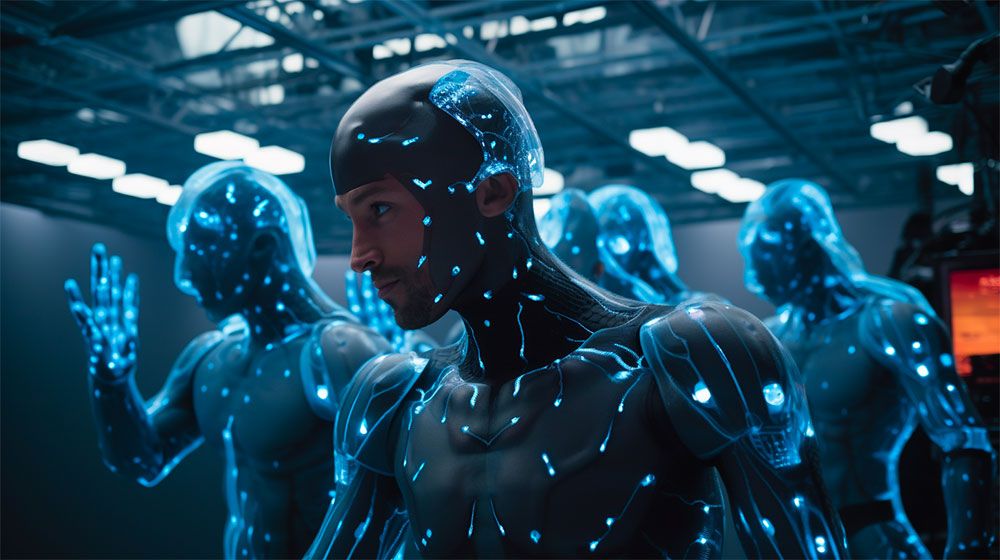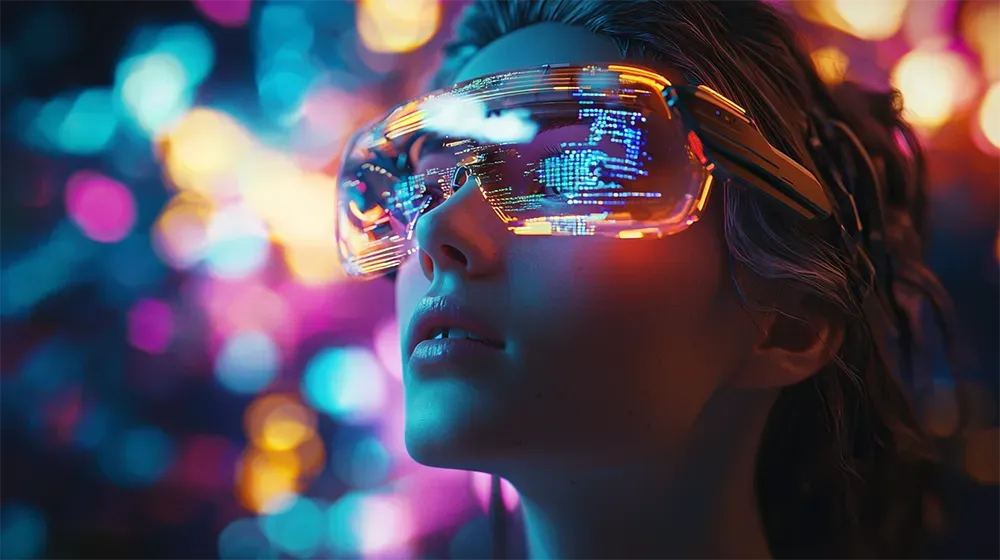How Human Digital Twins Will Disrupt Entertainment

As technology continues to evolve, so too does the way we approach various industries, from entertainment to corporate training. Exciting developments in recent years include the rise of live digital twins, which allow for the creation of highly realistic and customizable 3D models of people for a variety of purposes. One of the leading tools in this field is the MetaHuman Creator, which has already made waves in Hollywood and the corporate world with its impressive capabilities.
In this blog post, we will delve into the transformative potential of the MetaHuman Creator, exploring its potential impact on the entertainment and corporate training spheres. Amidst the backdrop of the ongoing actors' strike and the recent tentative agreement reached to resolve the screenwriters' strike in Hollywood, we will scrutinize how such technological advancements might intersect with and possibly reshape the labour landscape in these industries.
By analysing the advantages offered by MetaHuman Creator, alongside potential concerns and ethical implications, we will discuss strategies for creating the most realistic and immersive experiences possible while also considering the broader societal and industry implications entwined with the adoption of such technologies.
MetaHuman Creator: An Overview of its Capabilities
The MetaHuman Creator is a revolutionary software tool that allows users to create highly realistic digital characters with incredible detail and accuracy. With this software, users can manipulate various aspects of the character, including facial features, body shape, and clothing, to create a unique and realistic character. Developed by Epic Games, the MetaHuman Creator has the potential to revolutionise the entertainment and gaming industries by allowing creators to generate high-quality characters in a fraction of the time and cost of traditional methods.
In the 2023 State of Unreal keynote at GDC 2023, Epic Games demonstrated its new animation tools for the MetaHuman Creator that will allow creators to create highly realistic facial animations using video captured from an iPhone. This innovation will streamline the animation process, making it quicker and easier to create dynamic and engaging characters for films, video games, and other digital media.
During the keynote, Epic Games showcased the new tools with a live demonstration featuring an actor from the upcoming game Senua's Saga: Hellblade II. The actor spoke directly into the camera, and the MetaHuman Creator was able to accurately render their facial expressions in real time. The animation was both quick and precise, showcasing the incredible power of the MetaHuman Creator.
Perhaps even more impressive, the company then used the same animations captured during the demonstration to bring another MetaHuman character to life. This highlights the flexibility and versatility of the MetaHuman Creator, which allows creators to manipulate and adjust characters in real-time, making it an ideal tool for those working in time-sensitive industries.
The Impact of Human Digital Twins on Organizations
Let's take a closer look at how the use of human digital twins is impacting organizations and transforming the way they approach training and simulations.
The rise of digital humans, or synthetic humans, is having a profound impact on organizations and businesses across various industries. These virtual beings, created using advanced technologies such as computer graphics, artificial intelligence, and machine learning, have the potential to transform the way companies operate and interact with their customers.
One of the biggest advantages of digital humans is their ability to offer 24/7 customer service without the need for human employees. These virtual assistants can handle simple inquiries and tasks, freeing up human workers to focus on more complex and strategic work. Digital humans can also be programmed to have specific personalities and characteristics that align with a brand's image, creating a unique and personalised experience for customers. Especially when integrated with a Large Language Model, these digital twins can result in very realistic conversations and improved customer experience.
Developing digital humans is an exciting and rapidly evolving field that is evolving rapidly. For example, thanks to advances in voice cloning it is not possible to have digital twins speak many languages, as I recently showed with my digital twin:
Ultimately, digital humans are poised to play an increasingly important role in our lives, and it will be fascinating to witness their impact unfold and one area that is poised to be significantly disrupted by digital twins is the movie industry.
Hyper-realistic Avatars Meeting in Real-Time
The immersive internet is rapidly approaching, and Lex Fridman's recent interview with Mark Zuckerberg in the metaverse with hyper-realistic avaters might very well be a tipping point.
Two years ago, I wrote in my book 'Step into the Metaverse' that before the end of this decade, hyper-realistic avatars will enable a new form of 'Work From Anywhere' where people can meet in virtual reality and have such a realistic experience that it feels as good as physical reality. That future appears to be arriving a lot faster!
As Lex sits across from Mark, he struggles to believe his eyes. Though miles apart, Mark appeared before him in vivid detail, every expression and movement captured perfectly. This "photorealistic avatar" technology brought them together in a shared virtual space, their voices crystal clear.
This blurring of physical and digital could enable "presence" - the feeling of being together despite physical separation. It could transform remote work, recreation, and relationships.
Philosophically, this technology redraws our notion of reality. Our physical existence remains vital, but these shared virtual spaces become real in their own right by replicating intimacy and connection. What we perceive shapes our experience as much as objective reality.
Why Actors Should Embrace Live Digital Twins Now
As I wrote earlier, I believe that before the end of this decade, we will see the rise of billion-dollar movie startups. Small movie startups that will harness generative AI, powerful game engines, and hyper-realistic digital characters to turn a $1 million investment into $1 billion profits with entirely digital blockbusters - no real actors or movie sets required. In the not-so-near future, digital actors will become increasingly important.
That’s why I am also surprised by the ongoing actors’ strike. Why are actors different or require special treatment to all those taxi drivers, truck drivers, translators, delivery people or customer service representatives who are also likely to be replaced?
With the ability to create highly realistic and detailed digital representations of human characters, live digital twins are opening up new opportunities for actors to expand their skill set and marketability. The smart actors would move fast and license their image because a few years from now, more and more actors will be synthetic actors.
This technology of hyper-realistic synthetic humans will allow actors to expand their skill set and personality beyond traditional acting techniques and work in dynamic, interactive and virtual environments while physically being somewhere else. And it allows them to remain forever young and continue their career long after retirement.
Live Digital Twins Challenges
With new opportunities come potential challenges. Actors must adapt to this new landscape and find ways to stay relevant and competitive instead of going on strike. A significant challenge is the need to learn new skills and techniques to work with live digital humans. This requires actors to be open-minded, curious, and willing to embrace new technologies. They must also be able to work in a highly technical and precise environment where every movement and expression is captured and analysed.
Then we have the potential loss of jobs due to the increased use of live digital twins. could result in a reduction in traditional acting roles and a shift towards more motion capture work or even fully digital work.
But most importantly, the use of live digital twins may also have an impact on the traditional craft of acting. With the ability to manipulate facial expressions and movements in post-production, there is a risk of losing the spontaneity and authenticity of performance. Actors must find ways to maintain their craft and ensure that their performances remain authentic, even in a highly technical environment.
A pressing issue is the possibility that digital twins could replace human actors altogether. This raises concerns about the potential impact on employment in the industry and the loss of authenticity in film performances. With the ability to create highly realistic digital characters, production companies may choose to use live digital twins instead of hiring human actors.
Finally, the use of digital twins without an actor's consent is a serious ethical concern, as it could result in a loss of control over their image and likeness. Black Mirror’s episode Joan is Awful pushed the boundaries of what is possible far into the dystopian field, but with technology evolving at breakneck speed, such scenarios could become reality faster than we would expect or want.
Final Thoughts
From providing a safe and controlled environment for learning to creating more realistic and immersive movie experiences, synthetic humans driven by tools such as MetaHuman Creator are proving to be a valuable tool for entertainment and corporate industries. However, as with any new technology, there are also potential challenges and ethical concerns that must be considered.
Despite these challenges, hyper-realistic digital twins have the potential to continue to transform the way we approach training and entertainment. As technology continues to evolve, we can expect to see even more innovative tools and solutions emerge, each with its unique capabilities and benefits, disrupting many industries along the way.





